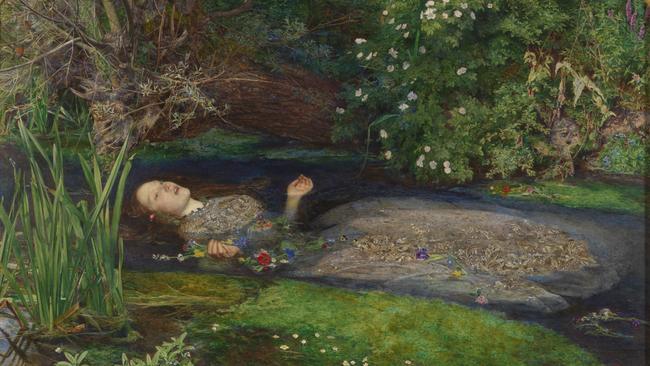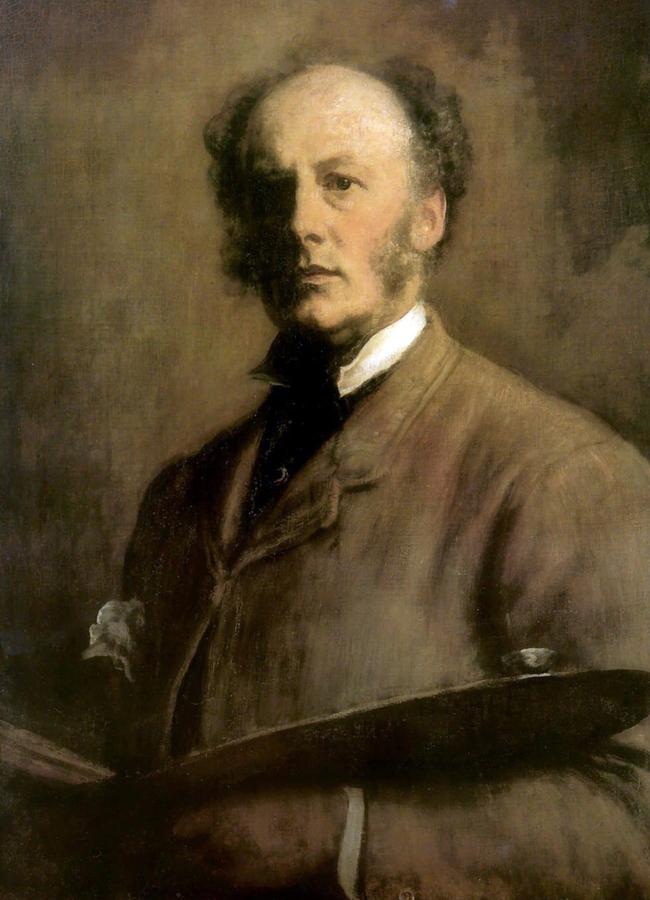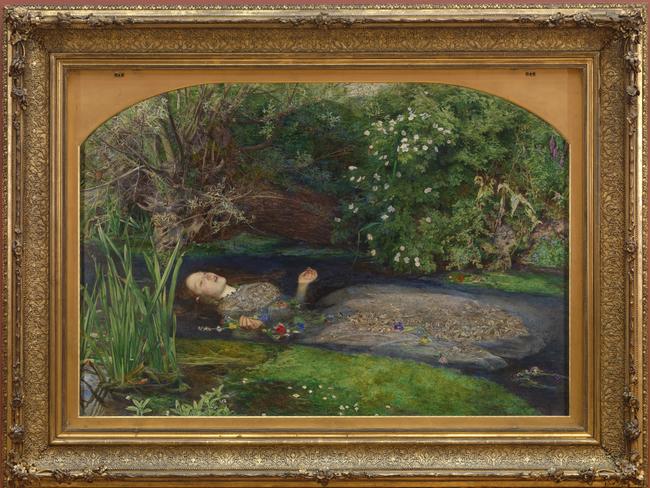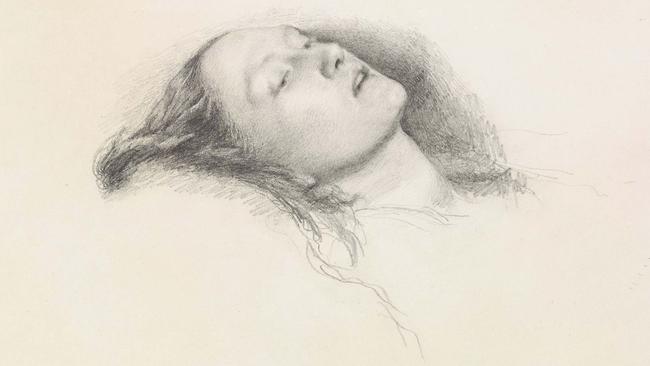John Everett Millais and the Pre-Raphaelites were sticklers for the purity of their art
CROUCHED by a river in Surrey, pestered by insects and buffeted by wind artist John Everett Millais began creating his masterpiece Ophelia

Today in History
Don't miss out on the headlines from Today in History. Followed categories will be added to My News.
CROUCHING for five months beside a river in Surrey, pestered by insects and buffeted by winds, John Everett Millais went to great extremes when he painted Ophelia, one of the most famous pictures in British art.
It was 1851, and the 22-year-old Millais was using a small section of the Hogsmill River as the background for his painting of the Shakespearean heroine who went mad and drowned.
Millais would soon become a feted artist and eventually a president of the Royal Academy of Art. But at the time he was doing it tough by the Hogsmill, he was noticeably on the outer. Earlier, his prodigious skill had earned him a place at the Royal Academy art school at the unheard of age of 11.
The elite of British culture had huge expectations for his future.
Millais, however, had other ideas. In 1848 he and a group of other radical art students, all under 25, had gathered at Millais’ studio in Gower St, London, to form what they called the Pre-Raphaelite Brotherhood.
Just as the French Impressionists would later reject the academic paintings of the Paris Salon, the Pre-Raphaelites were critical of what they saw as the formulaic and mannered quality of British art of their day.

RELATED NEWS: LONDON’S BEST LOVED PAINTING TO BE SENT TO CANBERRA
The Pre-Raphaelite Brotherhood rejected the Royal Academy’s dictate that students should take the lead from Raphael and other artists of the High Renaissance. Instead, the Brotherhood artists looked to Medieval and Gothic art, among other influences, perceiving these to be of greater purity.
Esteemed British artist Sir Joshua Reynolds epitomised all that the Pre-Raphaelites hated. “Their nickname for him was Sir Sloshua because they felt that the kind of painting that was in fashion according to his taste was a little bit sloppy,” says Tate Britain curator Carol Jacobi. “You could use the same tree in lots of different paintings, for example. The idea of going out and painting a tree and it being green was thought of as not the done thing.” That’s exactly why Millais was outside, painting his background for Ophelia.
“Millais was working eleven hour days, fending off ‘muscular’ flies, sitting under an inadequate umbrella, threatened by a bull in an adjacent field, buffeted by whipping winds and at the mercy of two swans who persisted in positioning themselves in his work spot or eating the water weeds he was attempting to paint on the left side of the canvas,” wrote Jason Rosenfeld in his book, John Everett Millais.

Having finished the background of the picture, Millais returned to his London studio and began to paint the figure of Ophelia into the landscape. His model was Elizabeth Siddal, who Millais and his friends had discovered working in a Leicester Square hat shop.
Siddal’s ethereal beauty captivated the artists of the Brotherhood, and she would go on to model for many of them.
Millais had bought a second-hand, embroidered wedding dress for Siddal to wear as she posed as Ophelia. Then he ran a bath and kept it warm with lamps underneath the tub. Siddal lay in that tub for Millais for many months.
One day the lamps went out and the bath grew cold. Siddal became ill, causing her father to sue Millais for her doctors’ bills. When the painting was finished, critics damned it as “needlessly morose and threatening, and not Romantic in tone”, Rosenfeld wrote. But when Ophelia was exhibited at the Royal Academy in 1852, it was a hit.

The painting’s extreme beauty, its preoccupation with the fleeting nature of youth, and the accumulation of astonishing detail it depicted, are still a marvel today. At the Tate Britain museum in London, where Ophelia hangs among other Pre-Raphaelite pictures, people come from all over the world just to see the lovely maiden as she takes her final breath.
Ophelia has travelled to many countries in her life, but never to Australia. That’s why National Gallery of Australia director Nick Mitzevich was in London this week to announce that she will be among the 43 Tate pictures to be brought to Canberra for the exhibition Love and Desire: Pre-Raphaelite Masterpieces from Tate, from December 14 until April 28, 2019.
Mitzevich believes Australians will be “seduced and tantalised” by the pictures in the show, which will include another 40 works from other collections.
“(The Pre-Raphaelites) are not just popular because they’re British. They’re popular because there’s a sense of beauty and poetry, and they lure you in. They reveal themselves slowly and you want to know more about them,” Mitzevich says.
The writer travelled to London courtesy of the National Gallery of Australia

